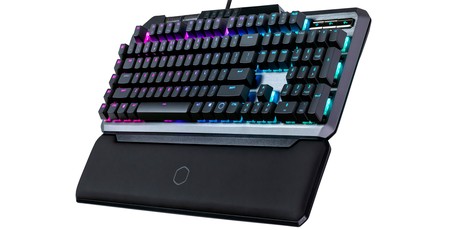
Aimpad Technology
Most PC gamers will be familiar enough with the limitations of a keyboard when it comes to performing certain tasks in games. Unlike gamepads where analogue control is built into sticks, triggers, and certain buttons, keyboards are inherently binary, which means character and vehicle movements in particular can be jerky (think tapping ‘S’ or ‘D’ to strafe slowly in an FPS or turn gradually in a racer) or rely on combo keys (e.g. Shift plus ‘W’ to sprint or walk or boost).
What if instead keyboard keys could be made into analogue inputs whereby the amount of force applied corresponds to an equivalent level of movement in-game, for example, instead of being limited to on/off, yes/no, 1/0, etc.? This is the question that forms the ‘why’ justification for Aimpad and technologies like it, most notably Wooting Flaretech, which has already debuted in the Wooting One and Wooting Two keyboards, neither of which I have used.
As to the ‘how’, the answer is infrared light, which can be used to calculate the depth that a switch has been depressed. The sensor sits underneath the switches and thus doesn’t interfere with the Cherry MX design at all, so there’s no impact on feel or build quality.
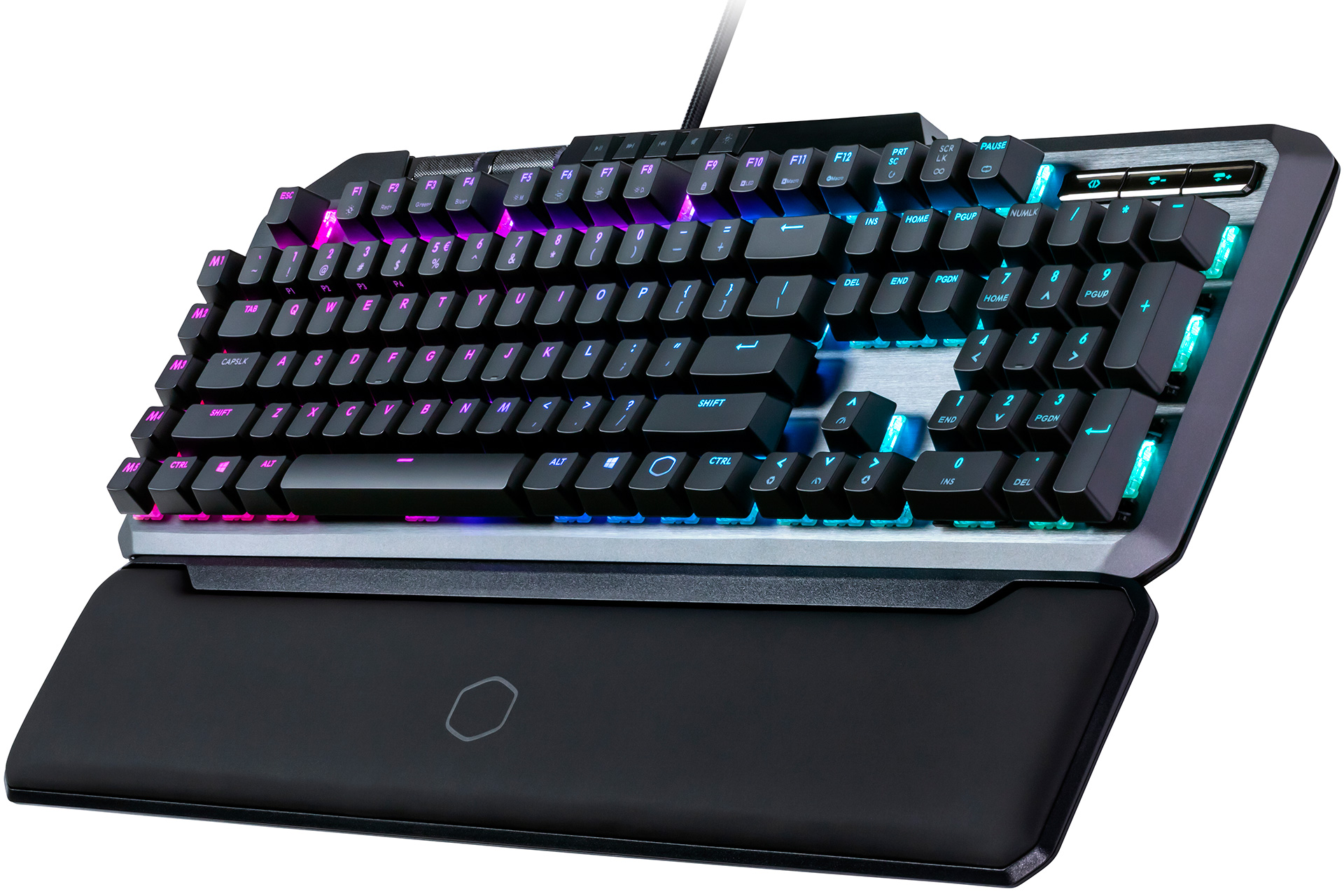
In the supporting materials for this review, Cooler Master made some comparisons between Aimpad and Wooting Flaretech that, naturally, favour the Aimpad implementation. The argument goes that Wooting’s technology only allows analogue input to be detected from 1.5mm to 3.6mm of the switch’s actuation distance, whereas here it is the full 4mm. It is also claimed to have a more linear response and a more consistent response across individual keys thanks to the use of Cherry MX switches and per-key calibration from Cooler Master. It also claims that Aimpad is not susceptible to interference from other IR light sources (direct sunlight, for example), which is supposedly not true of Wooting Flaretech switches.
Although the Aimpad website says the technology can be integrated ‘easily and cheaply’, the price of this keyboard suggests otherwise, especially as it is also only deployed in eight keys: QWERASDF. This is in stark contrast to the Wooting implementation, where it applies to every key.
The simple trick to making Aimpad work is having it be seen by Windows as a controller and not as a keyboard. It therefore doesn’t require specific developer integration to work. Aimpad has a list of compatible games on its website that it has tested and verified as working, but any game with controller support should be compatible.
Those M keys on the left side of the keyboard refer to Aimpad Modes and are independent of the four profiles. M1 is the default wherein Aimpad is disabled and the keyboard functions as normal with pure binary inputs; M2-M4 enable FPS Mode, Driving Mode, and Advanced Flight Mode respectively, with different combinations of the Aimpad keys being enabled to reflect the intended use; and M5 enables Activation Point MOBA Mode, wherein you can set the actuation point for the eight keys to make them more or less sensitive as you see fit.
When Aimpad is enabled on M2-M4, you aren’t able to type on the keys it’s enabled for, because the result would be dual inputs. This means you need to use M1 (or M5) for typing, so it’s good that switching is instantaneous.
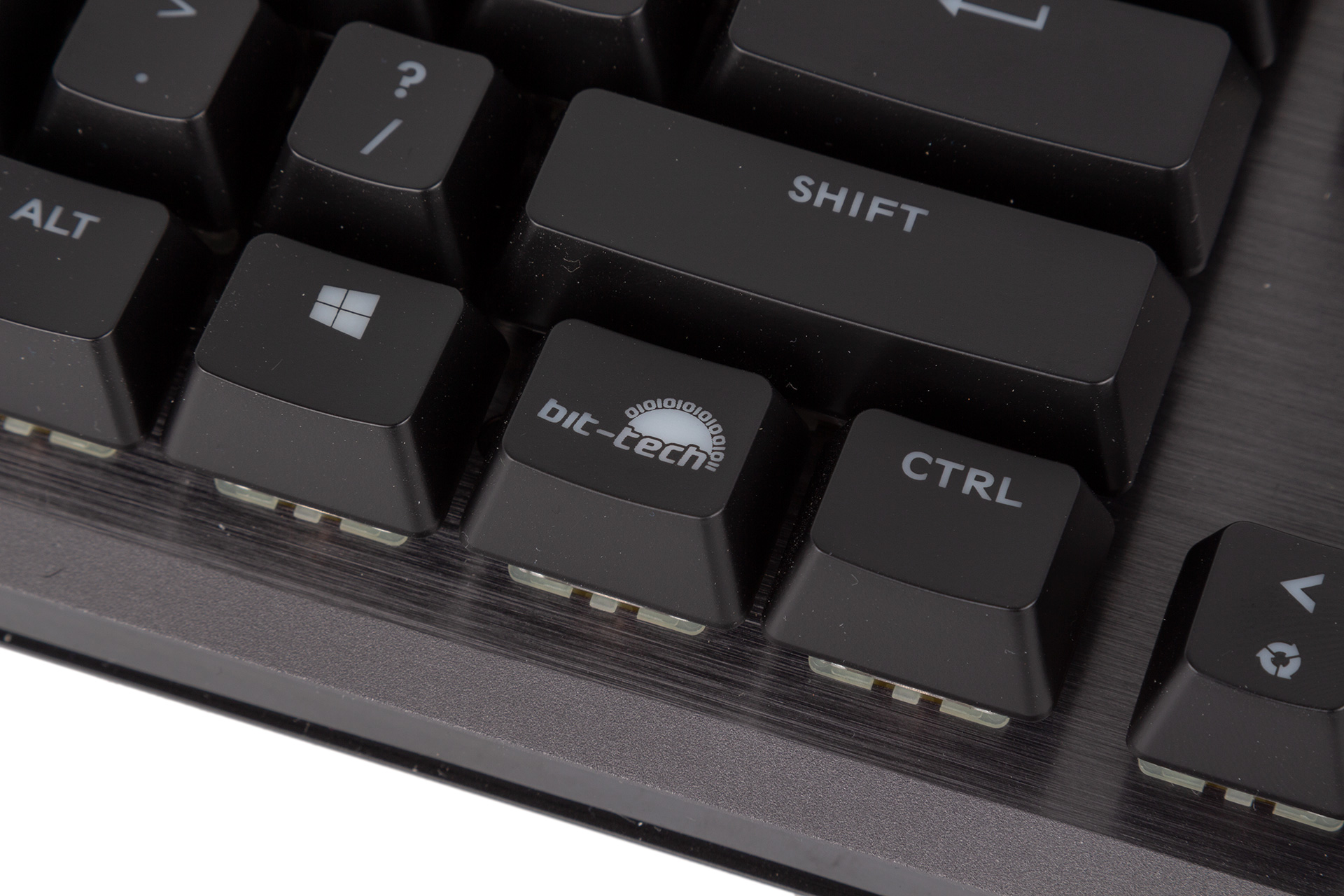
Keen to try it out, I jumped into Wolfenstein II, a single-player title that would allow me to test the tech out precisely without worrying about people killing me. The good news is that Aimpad works without fuss; I loaded in as I normally would, and lo and behold I had analogue movement on the WASD keys without having to delve into controller settings menus.
Using the sensitivity adjustment buttons in the top right, you can customise how far you need to press the key before the analogue kicks in in order to counteract programmed deadzones, and there are eight levels. Sadly, the keyboard doesn’t give you feedback as to which level you’re on, which I think is a big oversight, as different levels are likely to suit different games better, and over time you’re likely to build up a memory of what setting is best, so not knowing where you’re at seems daft. I found a medium setting for Wolfenstein allowed me the best range of motion from slow crawl to full speed based on my instinct of what it “should” be, but this will vary person to person, so the sensitivity buttons are definitely important for on-the-fly tweaking, even if their outcome isn’t clearly communicated.
The main hurdle is simply getting used to it. Tapping away at the WASD keys is really ingrained, and it’s probably the same for most PC gamers. It takes real concentration to adopt analogue input, potentially distracting you from the game itself.
Once you’re familiar and have the sensitivity right, though, I’ll admit that Aimpad is pretty damn cool. However, as much as we humans say we crave change, change is also hard, and I’m not sold that Aimpad is something I need in my life. As an added bonus, sure, but as the USP of a keyboard that is significantly more expensive than competitors? Suddenly it’s a lot more questionable.
I confess that I stuck solely to FPS testing, because that’s what I’m most familiar with, and it’s also where the keyboard/mouse combo truly shines. For driving, I’m going to pick a controller every day of the week, regardless of whether my keyboard has analogue inputs, as WASD controls on a car are just awkward compared to triggers and sticks. I can certainly see there being benefits to flying, but my own inability to handle aircraft in games meant that testing this mode was a little pointless also. Where I think the tech would work best is in games where FPS activity is a primary concern and vehicular control is secondary, so maybe things like PUBG, Battlefield, and GTA.

The M5 mode where you can set the keys to actuate at the lightest of touches is clearly going to be beneficial to MOBA players and the like too, provided you’re not in the habit of resting too heavily on keys.
I also found that the integrated calibration mode was odd and didn’t work properly. It uses the 'UIOP' and 'JKL;' keys to represent 'QWER' and 'ASDF' respectively, lighting them up red if they are in need of calibration. You then press the Aimpad keys down for four seconds, which will calibrate them and turn the lights green. What exactly it’s doing in these seconds isn’t clear, but the worst part is that re-entering calibration mode right afterwards saw all of my keys go back to red – what was the point in that? Also, it didn’t make any perceptible difference in response, so this is likely something the firmware needs to get better at or ideally automate.
As a quick aside, the third button in the top-right is used to disable Aimpad altogether and have the keyboard be seen as a keyboard. The M1 Mode means this is all but unnecessary, but it’s there if you need it.
While I can’t comment properly on Wooting’s competing technology, having never used it, I do know that the keyboards Wooting produces implement analogue technology on every single switch rather than just eight here. The programmability is also greater, as you’re able to set different commands on the same key for different actuation levels, which to me sounds really useful e.g. a light tap of a key does one thing, but a hard tap bottoming it out does another. In fairness, Cooler Master could potentially add such a thing via software, and Aimpad is certainly something it is committed to, but with the MK850 currently it feels like an added extra rather than something it was primarily designed for.

MSI MPG Velox 100R Chassis Review
October 14 2021 | 15:04

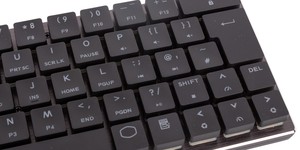
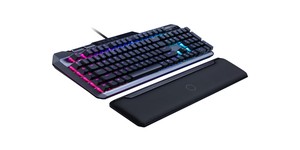





Want to comment? Please log in.